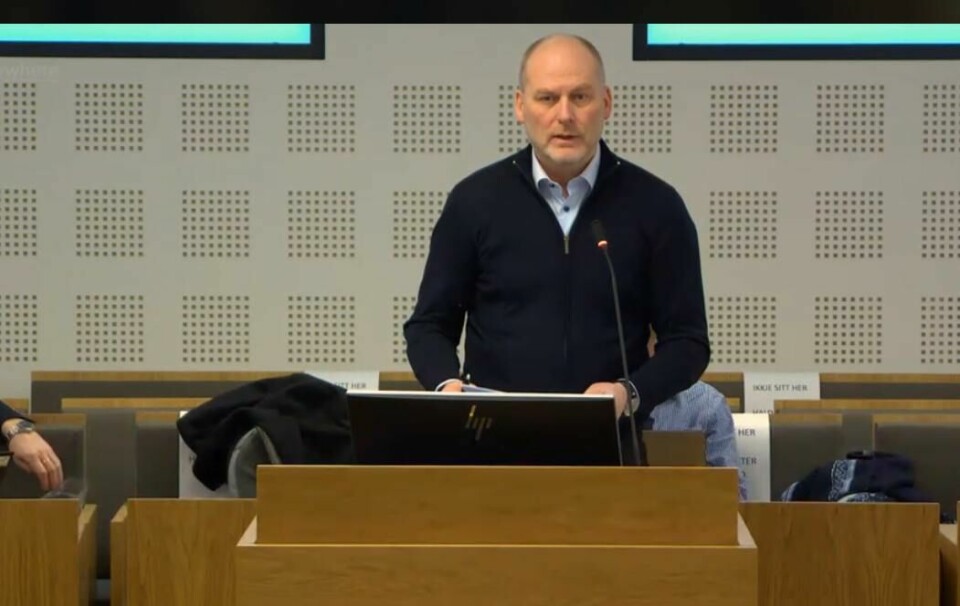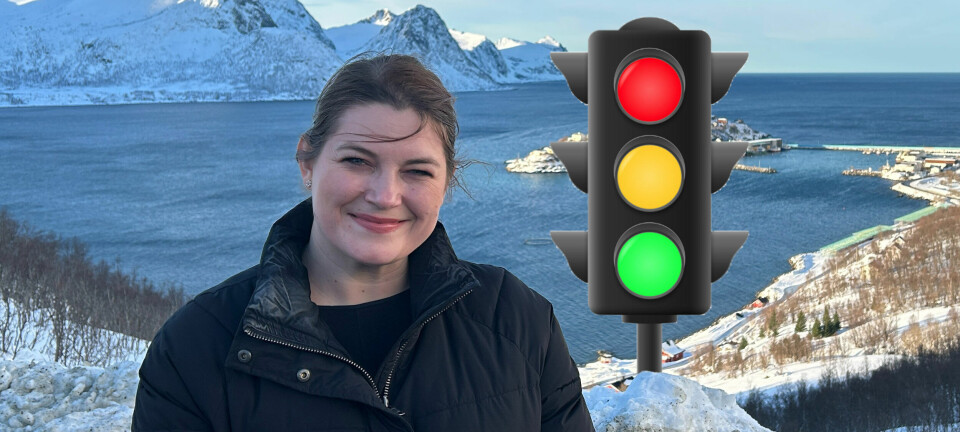
Should Norway switch off its salmon traffic lights?
Years of statistics do not show a clear link between reductions in fish farm volumes and lice in cages, and the number of lice on migrating wild smolts
Norway’s salmon farming “traffic light system” designed to protect migrating wild smolts from sea lice should be scrapped because it is not working, an aquaculture industry expert has said.
The system designates a red, yellow, or green light to each of Norway’s 13 fish farming production areas (PO’s) every two years, based on the perceived impact that lice from farms are having on wild salmon.
Farmers in a PO that receives a red light must reduce production by 6%. Earlier this month, PO4 (Nordhordland to Stadt) and PO3 (Karmøy to Sotra) were given a red light for the third and second times respectively.
No clear connection
But PO3/4 Knowledge Incubator, an association for aquaculture companies in production areas 3 and 4, says there appears to be no correlation between the number of lice found on wild fish and caught in trawls, and the number of lice on their fish.
In a chronicle on the issue, PO3/4 Knowledge Incubator secretary Even Søfteland writes: “The aquaculture industry in PO3 and PO4 makes an enormous effort throughout the year, and especially every spring, to keep lice numbers as low as possible when the wild salmon smolt migrates out of the rivers.
“A new compilation of data from the aquaculture facilities and from trawls for post smolt in the fjords does not provide the clear connection between the number of fish/number of sexually mature female lice in the aquaculture facilities and the number of lice observed on migrating wild salmon smolt caught in trawls in the NALO monitoring (Institute of Marine Research).
The table shows how many fish and adult female lice were in fish farms as of May 1, which is roughly when the wild salmon smolt start to migrate out of the rivers in the Sognefjord and Sognesjøen area (PO4), and how many lice were on the salmon smolts the Institute of Marine Research Institute caught in trawls in the weeks after.
| Year | Smolt trawl | Louse trawl | Louse trawl average | Farmed fish | Fish farm lice | Average |
| 2012 | 98 | 472 | 4.82 | - | - | - |
| 2013 | 94 | 9 | 0.10 | - | - | - |
| 2014 | 72 | 5 | 0.07 | 10,617,239 | 448,624 | 0.04 |
| 2015 | - | - | - | 7,486,810 | 1,172,312 | 0.16 |
| 2016 | - | - | - | 13,376,427 | 1,172,369 | 0.09 |
| 2017 | 195 | 4,909 | 25.17 | 7,683,633 | 1,270,045 | 0.17 |
| 2018 | 401 | 824 | 2.05 | 13,956,785 | 1,367,795 | 0.10 |
| 2019 | 332 | 8,263 | 24.89 | 9,782,670 | 977,387 | 0.10 |
| 2020 | 247 | 141 | 0.57 | 16,883,274 | 791,781 | 0.05 |
| 2021 | 150 | 2,356 | 15.71 | 6,225,255 | 470,242 | 0.08 |
| 2022 | 177 | 1,896 | 10.71 | 16,103,117 | 1,026,324 | 0.06 |
| 2023 | 630 | 4,860 | 7.71 | 6,815,822 | 328,913 | 0.05 |
Sources: https://metadata.nmdc.no/UserInterface/#/ (search sognefj), reported figures from the aquaculture operators to the fish health networks, https://lusedata.no/) (No trawling was carried out in the Sognefjord in 2015 and 2016 by the Institute of Marine Research, and overall data from aquaculture were not been collected in 2012 and 2013.
“When you look at the table above, it is difficult to see a logical pattern between the number of fish and lice in aquaculture and the number of lice found on migrating salmon smolts. In 2018, for example, there were close to 14 million fish in the aquaculture facilities in Sognefjorden and Sognesjøen, which together had close to 1.4 million adult female lice on them. Nevertheless, few lice were found on the emigrating smolts. In 2023, however, it was the opposite. At that time there were only 6.8 million fish in total in the area, with a total of 0.3 million adult female lice. Nevertheless, nearly four times more lice were found on the migrating salmon smolt than in 2018.
“Today’s traffic light system, which simply explains the relationship between lice in aquaculture facilities and lice on migrating salmon smolts, does not provide an answer to the aforementioned conditions. The actual figures show that there are more lice every other year on the trawled smolt, but that this is the opposite year to when there are most fish and lice in the aquaculture facilities. The situation makes it difficult to see a clear connection between the two observations of lice in aquaculture facilities and lice on migrating smolts. We also see the same pattern in the Hardangerfjord in PO3. Years with more fish and more lice in aquaculture result in fewer lice on migrating wild salmon smolt caught in trawls.
The table shows how many fish and adult female lice were in fish farms as of May 1, which is roughly when the wild salmon smolt start to migrate out of the rivers in the Hardangerfjord (PO3), and how many lice were on the salmon smolts the Institute of Marine Research Institute caught in trawls in the weeks after.
| Year | Smolt trawl | Louse trawl | Louse trawl average | Farmed fish | Fish farm lice | Average |
| 2012 | 98 | 410 | 4.18 | 25,726,241 | 937,740 | 0.04 |
| 2013 | 62 | 60 | 0.97 | 21,352,349 | 247,221 | 0.01 |
| 2014 | 34 | 20 | 0.59 | 23,965,415 | 1,264,850 | 0.05 |
| 2015 | 116 | 1,097 | 9.46 | 22,350,680 | 1,871,266 | 0.08 |
| 2016 | 191 | 822 | 4.30 | 29,320,797 | 3,454,831 | 0.12 |
| 2017 | 287 | 2,487 | 8.67 | 23,768,217 | 1,520,052 | 0.06 |
| 2018 | 214 | 899 | 4.20 | 27,702.649 | 1,214,219 | 0.04 |
| 2019 | 539 | 686 | 1.27 | 24,926,943 | 1,209,137 | 0.05 |
| 2020 | 250 | 2,369 | 9.48 | 28,042,578 | 1,395,407 | 0.05 |
| 2021 | 732 | 15,316 | 20.92 | 22,117,913 | 1,269,911 | 0.06 |
| 2022 | 654 | 2,743 | 4.19 | 24,961,641 | 1,693,739 | 0.07 |
| 2023 | 106 | 814 | 7.68 | 21,343,123 | 739,787 | 0.03 |
Sources: https://metadata.nmdc.no/UserInterface/#/ (search hardangerf), reported figures from the aquaculture operators to the fish health networks, https://lusedata.no/.
“The measurements indicate that the level of knowledge about cause/effect is not captured well enough in the current traffic light system. The fact is that no production areas in Norway have managed to reduce the number of lice more effectively than the aquaculture operators in PO4 and PO3 in the last decade. This decline is also described by both the Norwegian Food Safety Authority and the Veterinary Institute (pp 171-174).
Mortality at sea has increased as a result of delousing. It cannot continue like this
“Nevertheless, it does not seem to have any effect on emigrating wild salmon smolts, and the fisheries minister believes that the solution is to produce even fewer fish in the aquaculture facilities in PO3 and PO4 (Vestland county). But when fewer fish and fewer lice in aquaculture do not seem to result in fewer lice on the wild salmon smolts, the industry questions whether we are on the right course.
“It has cost a lot to manage to reduce the number of lice as much as the aquaculture operators in PO3 and PO4 have done - both through preventive measures, but also in the form of lice removal.
“Delousings are a stress for the salmon we have in our cages. Mortality at sea has increased as a result of this. It cannot continue like this. If we are to strengthen the relationship between the wild salmon and the aquaculture industry, a completely new knowledge platform is required than the one currently in the current traffic light system. The time has come to rethink, and significantly strengthen the knowledge base around wild salmon and aquaculture.”
























































